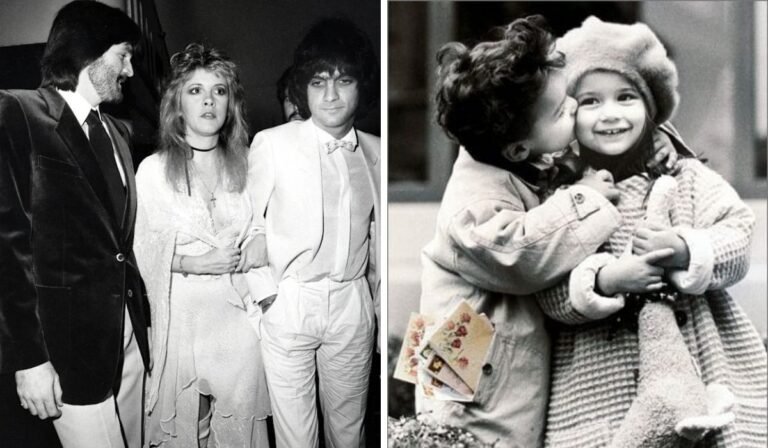Have you ever come across heartwarming black-and-white photos of children, accentuated with soft, hand-painted colors? These nostalgic images, often seen on greeting cards and posters, belong to the world of Kim Anderson—a name that has captivated art lovers for decades. But here’s a surprising fact: Kim Anderson isn’t a real person. Instead, it’s the pseudonym of Bertram Bahner, a German photographer whose unique style turned childhood innocence into an internationally beloved art form.
This article takes a deep dive into Kim Anderson’s photography, the story of Bertram Bahner, and how his artistic vision created a worldwide phenomenon.
Who Is Kim Anderson?
Contrary to popular belief, Kim Anderson is not an actual photographer. The name was a branding choice for a collection of nostalgic children’s portraits created by Bertram Bahner, a German photographer born in 1959.
Bahner began his career as a commercial photographer, working with fashion and advertising agencies. While his early work mainly focused on portraiture and black-and-white imagery, it wasn’t until a deeply personal moment in his life that his signature style was born.
The Birth of a Unique Photography Style
The turning point in Bahner’s career came when he became a father. His daughter, Nicola, became his inspiration and muse. Enchanted by her innocence and playful spirit, Bahner started capturing candid moments of Nicola and her friends at play. Instead of traditional posed photography, he let the children interact naturally, waiting for spontaneous moments of joy, curiosity, and laughter.
To make his images even more striking, he selectively hand-painted details like flowers, clothing, and accessories, adding a delicate pop of color to his otherwise black-and-white photos. His wife, Monika, played a key role in styling the children with vintage-inspired outfits, hats, and props, creating a timeless aesthetic that evoked feelings of nostalgia and warmth.
The Rise to Fame
Bahner’s unique photography style didn’t go unnoticed. His work caught the attention of Verkerke Reprodukties, a Dutch publishing company specializing in posters, greeting cards, and art prints.
In 1992, Verkerke was acquired by Hallmark Cards, one of the largest greeting card companies in the world. Hallmark decided to market Bahner’s photos under the name “Kim Anderson,” believing that an English-sounding name would appeal to a broader audience.
The response was phenomenal. Kim Anderson posters and greeting cards became a global sensation, gracing walls, gift shops, and stationery stores worldwide.
Expanding the Kim Anderson Brand
Encouraged by the success of his images, Bahner and his family relocated from Germany to the serene town of Zug, Switzerland in 1995. Here, he established NBM Bahner Studios AG, a company dedicated to licensing the Kim Anderson brand. The brand expanded beyond photography into a wide range of merchandise, including:
- Figurines based on his images
- Jigsaw puzzles featuring his famous portraits
- Coffee table books filled with his most beloved works
Books like The Art of Kim Anderson and Endless Dreams showcased hundreds of his most iconic photographs, keeping the Kim Anderson legacy alive.
The Decline of Popularity
Despite the immense success, the golden era of Kim Anderson began to fade in the early 2000s. Several factors contributed to this decline:
- Digital Photography & Editing Tools – With the rise of software like Adobe Photoshop, photographers could now easily replicate the Kim Anderson aesthetic without the need for hand-painting.
- Shifting Art Trends – The nostalgic, romanticized style of children’s portraits lost its mainstream appeal as modern and candid photography took over.
- Changing Family Dynamic – Bahner’s children, Nicola and Manuel, who were once central to his work, grew up. Though he continued photographing other children, the personal connection that initially fueled his creativity had changed.
Today, while the Kim Anderson brand is no longer as dominant, it remains cherished by collectors and long-time fans who appreciate the nostalgic charm of Bahner’s work.
The Legacy of Kim Anderson
Even though the hype surrounding Kim Anderson’s images has lessened, their sentimental value remains timeless. His photos still resonate with those who appreciate childhood innocence, nostalgia, and artistry.
What Makes Kim Anderson’s Photography Unique?
- Candid Moments: Unlike posed studio portraits, his photos feel natural and full of emotion.
- Hand-Painted Details: The subtle pops of color make his images stand out.
- Vintage Styling: The old-fashioned clothing and props add a timeless charm.
For those still interested in his work, Kim Anderson’s books and prints are available on Amazon and other online stores.
Conclusion
Kim Anderson’s photography remains a beautiful reminder of childhood innocence and nostalgia. Though the brand may not be as widespread as before, Bertram Bahner’s work continues to inspire art lovers around the world.
If you want to experience the charm and warmth of his work, check out his books or look for classic Kim Anderson prints that still bring joy to many homes today.
FAQs About Kim Anderson Photography
1. Is Kim Anderson a real person?
No, Kim Anderson is a pseudonym used by German photographer Bertram Bahner for his nostalgic children’s portraits.
2. Why did Bertram Bahner use the name Kim Anderson?
The name was chosen for marketing reasons when his work was published by Hallmark Cards. An English name made it more appealing to a global audience.
3. What makes Kim Anderson’s photography special?
His photos are known for their black-and-white style with hand-painted color details, capturing innocent and candid childhood moments with a vintage aesthetic.
4. Where can I buy Kim Anderson prints and books?
You can find Kim Anderson’s books and prints on Amazon, eBay, and specialty art stores that sell nostalgic photography and greeting cards.
5. Why did Kim Anderson’s popularity decline?
With the advent of digital photography and editing software, many photographers could replicate his style easily. Additionally, art trends shifted, making his nostalgic style less mainstream.

